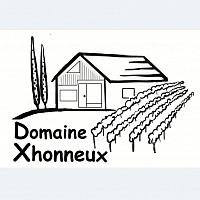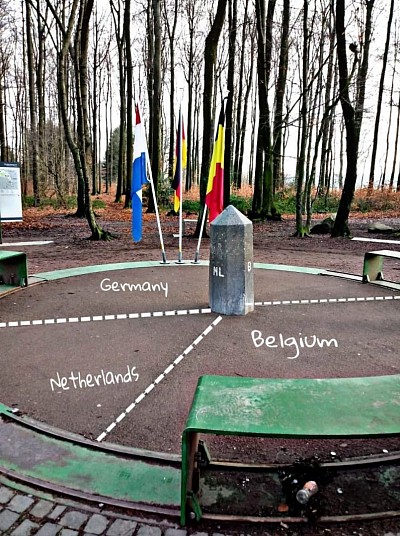Drielandenpunt Vaals
Drielandenpunt
The Drielandenpunt, located in Vaals, is a remarkable geographical landmark that holds immense significance in the region. It is a place where three countries, Germany, the Netherlands, and Belgium, converge in a unique and intriguing manner. This spot is not only a meeting point for nations but also home to the highest hill in the Netherlands.
Situated in the province of Limburg, the Drielandenpunt offers a captivating experience for visitors, as it allows them to stand in three different countries simultaneously. It represents a symbol of unity and diversity, where people can witness the borders blending together, transcending the divisions that typically separate nations.
The Drielandenpunt is positioned atop the Vaalserberg, a modest yet significant elevation that reaches a height of 322.7 meters (1,059 feet) above sea level. Although this height might be considered modest compared to other mountain ranges in the world, it proudly holds the title of being the highest point in the Netherlands. Its summit presents an awe-inspiring view of the surrounding landscape, with lush greenery, rolling hills, and picturesque vistas stretching across the borderlands.
Apart from its geographical significance, the Drielandenpunt also offers various attractions and activities for visitors. One of the highlights is the imposing landmark structure that stands proudly at the convergence of the three countries. This monument, often adorned with the flags of Germany, the Netherlands, and Belgium, represents the unification of the region and serves as a popular photo spot for tourists.
Additionally, the Drielandenpunt boasts numerous walking and cycling trails that traverse the beautiful countryside. Visitors can explore the scenic paths that wind through the rolling hills and picturesque landscapes, providing a serene and tranquil escape from the hustle and bustle of city life. Along these trails, one can also find various markers indicating the borders between the three nations, further emphasizing the unique nature of this geographical location.
The Drielandenpunt is not only a popular destination for tourists seeking a one-of-a-kind experience but also a testament to the close ties between neighboring nations. It serves as a reminder that despite differences in language, culture, and history, countries can come together and coexist harmoniously.
In conclusion, the Drielandenpunt in Vaals, Netherlands, is a captivating spot where three nations meet, namely Germany, the Netherlands, and Belgium. It not only represents the convergence of borders but also stands as the highest point in the Netherlands, atop the Vaalserberg. With its breathtaking views, the landmark structure, and the opportunity to stand in multiple countries at once, the Drielandenpunt is a remarkable destination that showcases the unity and diversity of the region.
The history of the Drielandenpunt dates back several centuries and is intertwined with the shifting borders and geopolitical developments in the region. The convergence of the three countries at this specific location has not always been as clearly defined as it is today.
The border region between Germany, the Netherlands, and Belgium has undergone numerous changes throughout history, influenced by political, economic, and territorial factors. The area has seen various treaties, negotiations, and conflicts that shaped the boundaries we recognize today.
During the Middle Ages, the region was divided into small feudal territories, with different ruling powers controlling various parts. Over time, larger political entities emerged, and the area became part of the larger domains of the Holy Roman Empire, the Spanish Netherlands, and later the Austrian Netherlands.
In the 19th century, with the emergence of nation-states and the rise of industrialization, there was a growing need for clearly defined borders between countries. The Congress of Vienna in 1815 played a significant role in shaping the boundaries in the region, as it aimed to establish a balance of power after the Napoleonic Wars.
The specific location of the Drielandenpunt gained importance during the negotiations that followed World War I. The Treaty of Versailles in 1919, which redrew the borders of Europe, had an impact on the area. The border between Germany and the Netherlands was adjusted, and a small piece of land around the Vaalserberg, including the Drielandenpunt, was transferred to Dutch control.
The monument at the Drielandenpunt was erected in 1926 to commemorate the new borders and the peaceful resolution of territorial disputes. It symbolizes the harmonious coexistence of the three nations and has become an iconic landmark in the region.
Despite the shifting borders, the Drielandenpunt has remained a place of cross-cultural interaction and exchange. It has served as a meeting point for people from neighboring countries, facilitating trade, tourism, and cultural connections. Over the years, the area surrounding the Drielandenpunt has developed into a popular destination for both locals and international visitors, offering a unique blend of natural beauty, historical significance, and symbolic unity.
Today, the Drielandenpunt continues to be a testament to the shared history and peaceful coexistence of Germany, the Netherlands, and Belgium. It stands as a reminder of the importance of collaboration, diplomacy, and understanding among nations, and a symbol of the interconnectedness of our world.


